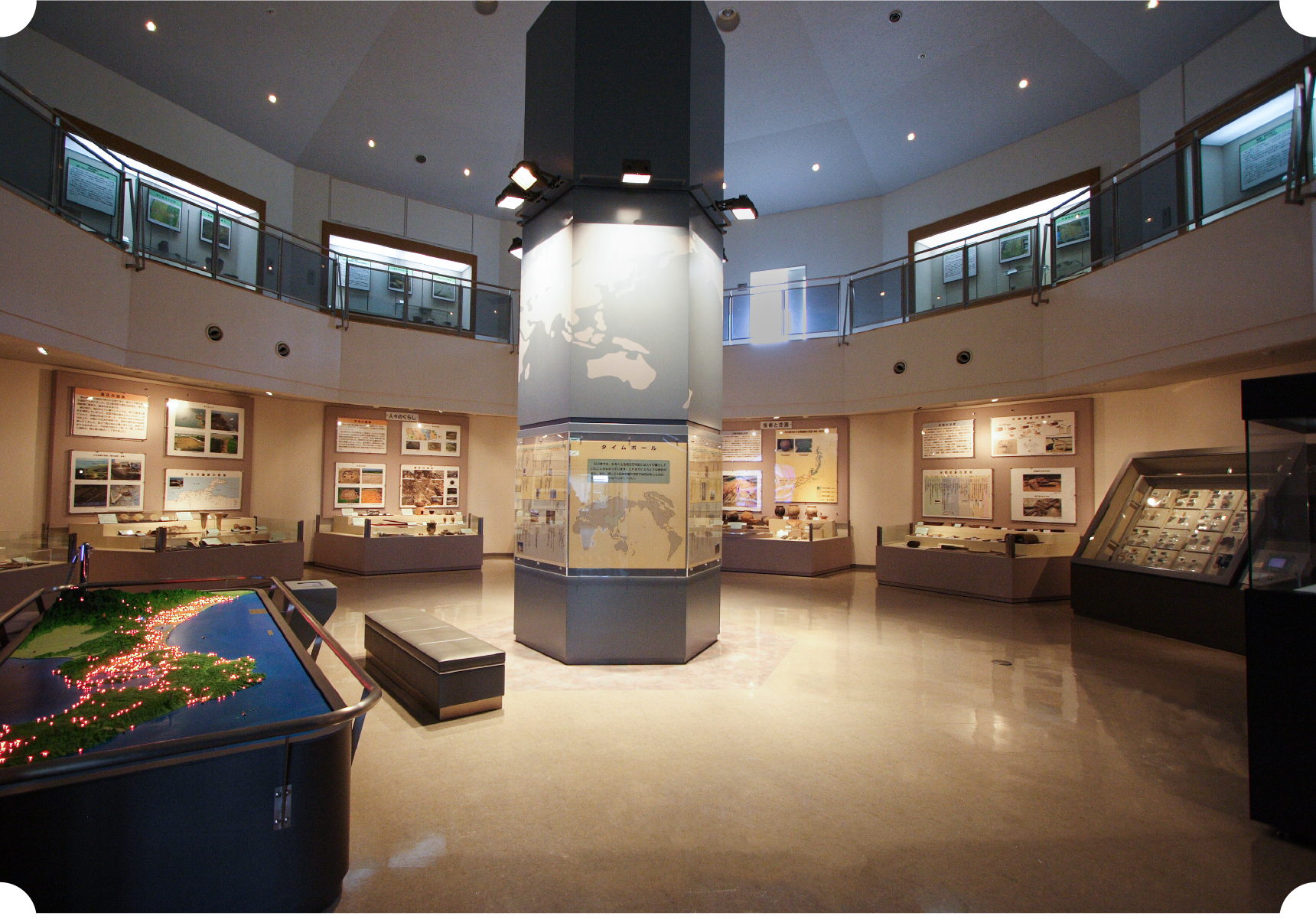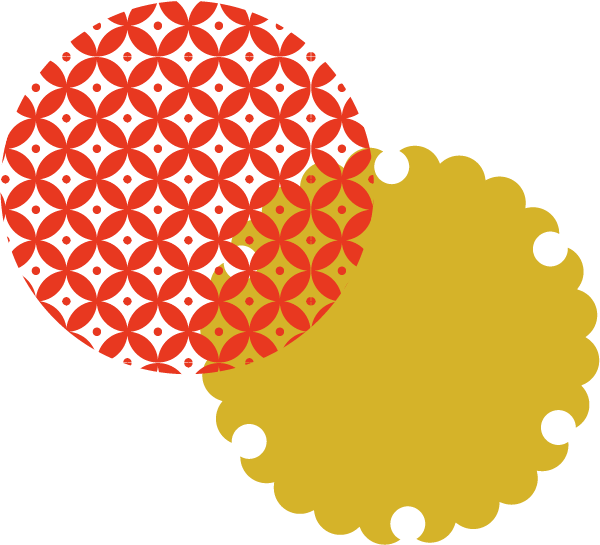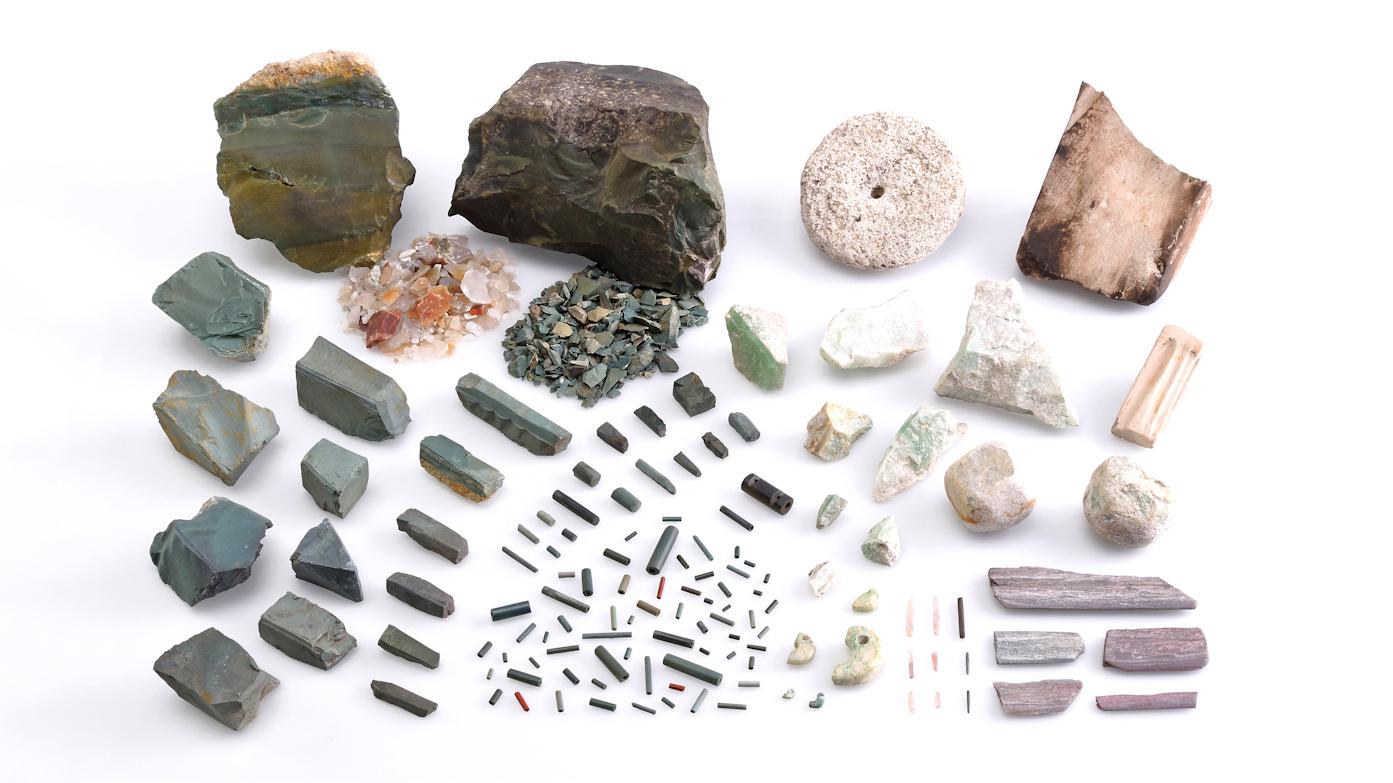Location Ishikawa Archaeological Foundation
Yokaichijikata Site Artifact: Materials for Making Precious Stones
- Display status
- No permanent display
- Period
- Yayoi Period (3rd to 1st century BC)
- Form/Type
- Archaeological material
- Location
- Doihara-machi, Hinode-machi, Komatsu-no-Mori (Komatsu City)
During the Yayoi Period, magatama comma-shaped beads and kudatama cylindrical beads were introduced as new sets of jewelry from the Korean Peninsula.
Since the middle Yayoi Period, magatama and kudatama had been actively produced within Ishikawa Prefecture (mainly in Kaga). Magatama were produced using jade obtained from around Itoigawa City, Niigata Prefecture, and kudatama were produced using green jasper and green tuff produced locally in places such as Takigahara-machi, Komatsu City.
To make kudatama, raw stones were roughly split, and then grooves were cut with a stone saw to split them more finely. The pieces were then ground and polished. A ground stone needle with a diameter of approximately 1 mm, made of andesite or agate, was also found as a tool for making holes in the kudatama. The stones used to make these jewels were obtained from Komatsu City, the Noto region, and as far away as Tokushima, Wakayama, and Nara Prefectures. In the late Yayoi period, the material of the tools changed to iron.
As the raw materials for making the precious stones were easily available within Ishikawa Prefecture, they were actively made in Kaga, becoming important trade goods that were transported to various parts of the Japanese archipelago.
Downloading, taking screenshots, conversion, reprinting, etc. of the content on this website, including the text and images, without prior consent are prohibited.

Opened in 1998 as an open facility for the excavation and organization of excavated artifacts and the publication of reports on buried cultural properties (archaeological sites) that convey the history and culture of Ishikawa prefecture, as well as to hold exhibitions and lectures that make use of the results. The exhibition rooms comprise sections organized by theme and era, where you can see and touch precious earthenware and stone tools discovered from archaeological sites throughout the prefecture. In 2001, they also opened the Ancient Experience Area, where you can enjoy learning about the lives and techniques of ancient people. Both adults and children can learn about local history in an accessible and easy manner, while deepening their interest and understanding of cultural properties.
18-1 Nakatomachi, Kanazawa, 920-1336 Google Maps
TEL 076-229-4477 E-mail daihyou@ishikawa-maibun.or.jp




